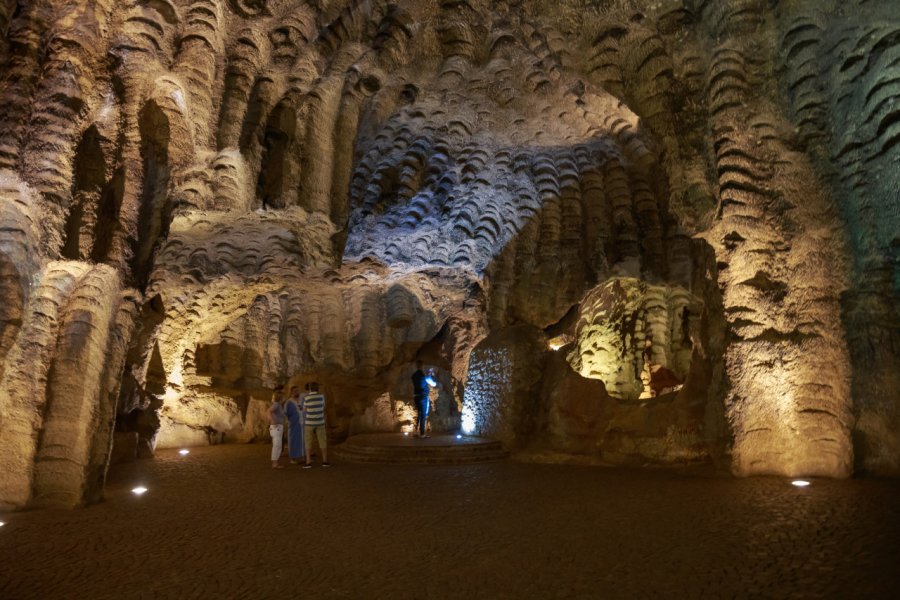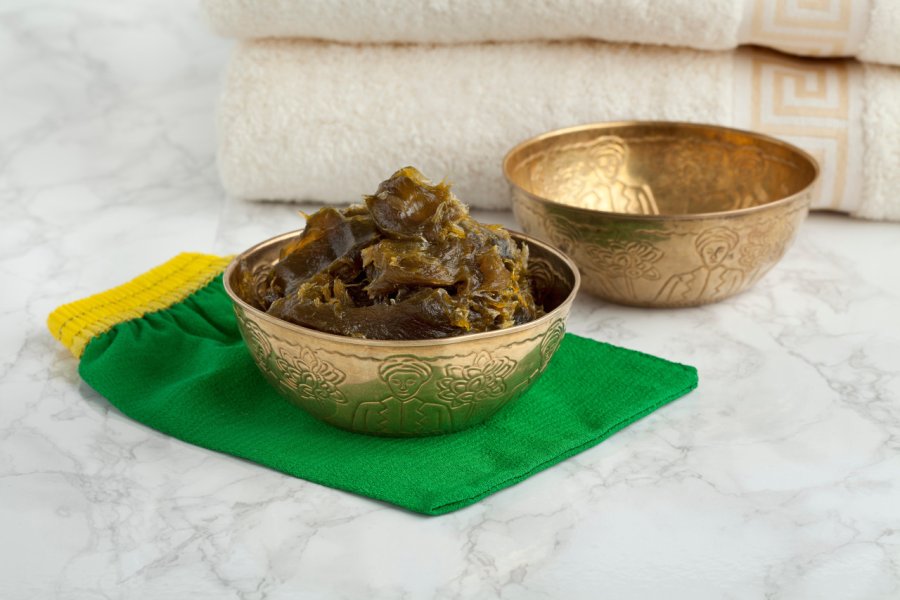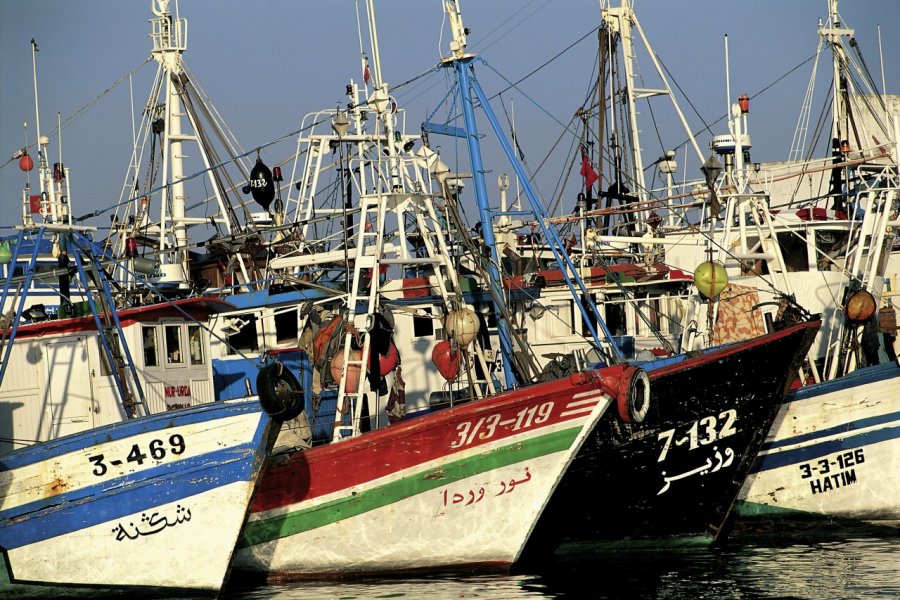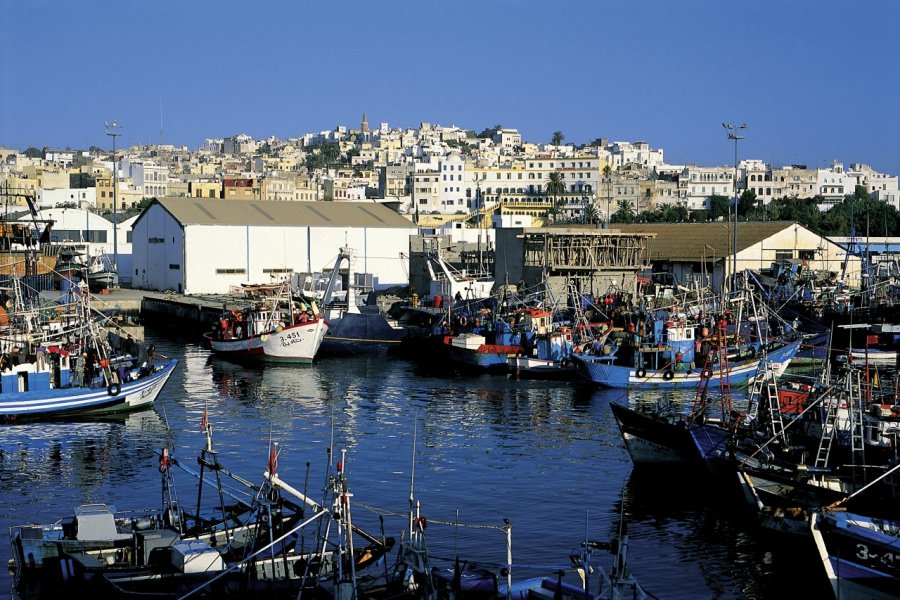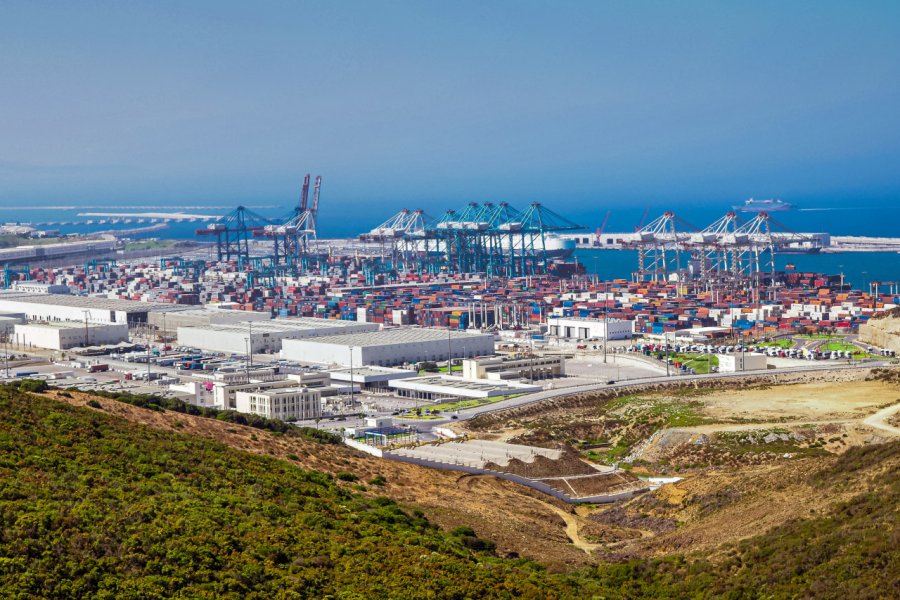Travel guide Tanger
Insubordinate and mythical, once the home of Matisse and Truman Capote, the Stones, Kerouac and Yves Saint Laurent, Tangier is a mixed-race city, inspired and shaped by both the Middle East and Africa, Latin America and Andalusia. It must be said that its position in the Strait of Gibraltar has made it, since the Phoenicians' time, a strategic entry point and passage between Africa and Europe, and its medina on the hillside, full of charming and whitewashed buildings, continues to face the bay, preserving within its walls the ancient and multiple influences of distant peoples. The inhabitants of the city are welcoming, and the traveller will easily find his way through the narrow streets of the medina, the café terraces, the souks with a thousand and one spicy colours and smells... The Tangier tourist guide will also lead us to the Dar el-Makhzen palace, transformed into a museum of ancient Moroccan objects, but also to its casbah, high perched, which dominates the rest of the city from dawn to sunset, like a window opening onto the world. Tangier is a destination of dreams, of artificial but very real paradises. Push the doors, be curious and smile, the journey begins!
What to see, what to do Tanger?
-
Book an activity
-
Customized travel
- Addresses to visit Tanger
When to go Tanger ?
When to go to Tangier? Unlike the rest of Morocco, Tangier enjoys a particularly mild climate, so the high and low seasons are not very marked in the region. If we had to make a distinction, the high season would tend to correspond to the summer and the European summer holidays. When to go to Tangier then? The best season to go to Tangier is perhaps around April-May and September-October: the temperatures are mild and the city is a little less crowded than in the middle of summer.
Weather at the moment
Suggested addresses Tanger
Travel Tanger
-
Find a hotel
-
Car Rental
-
International e-SIM package
-
Find a local agency
Find unique Stay Offers with our Partners
How to go Tanger
How to go alone
A direct flight to Tangier from France will cost you between 70 and 300 € round trip depending on the season, the airline and especially the reservation deadline. For Paris, the best prices are mainly from Beauvais. To save money, remember to book your accommodation in advance as well.
How to go on a tour
There are many tour operators, specialists in Tangier and Morocco, and other receptive agencies on the market. The trick is to choose the offer that best suits your expectations: a package combining flight and accommodation, an all-inclusive stay, a family vacation or honeymoon tour, a self-tour... It is also possible to work out a tailor-made trip in consultation with these agencies.
How to get around
It is important to choose the mode of transport that is adapted to your needs and your wallet. To visit the centre of Tangier, a car will be encombrante ; prefer small taxis or walking. To visit the surroundings of Tangier, you will have the choice between collective taxis, buses, car rental or the services of an agency that will organize the desired excursion. Be careful of the authorized speeds if you rent a car, many radars mark the roads.
Featured articles Tanger
Discover Tanger
Between Africa and Europe, the Atlantic and the Mediterranean, Tangier-la-white is a crossroads city that has always attracted the covetousness of the great powers. Tucked away behind the high walls of the Kasbah, the medina is nevertheless very open to the world. Nationalities and religions have always rubbed shoulders and mixed, spreading in their wake a cosmopolitan atmosphere that makes the city unique. French, English and Spanish are still spoken. Beyond the medina, the new city bears the traces of the international past. Bullfighting arenas, the Anglican church, the Place de France, the Gran Café de Paris, the appointments of the past remain. From the rooftop terraces of the medina, the view goes far out to the blue of the ocean. The city would not have the same appeal without its privileged position on the Strait of Gibraltar and its gigantic port, Tanger Med, which guarantees its economic and commercial future.
Pictures and images Tanger
The 12 keywords Tanger
1. Bissara

If you ask a Tangier native which local culinary specialty he or she prefers, chances are they'll mention bissara. This slightly thick soup is simmered with split peas, garlic, cumin and olive oil. It's served all over town, in all the gargotes and malbanas of the medina and the new town.
2. Spain
The influence of the neighbouring country can be felt everywhere in the city. It can be felt in the local cuisine, in a certain architecture and in cultural habits. Thus, the "paseo" is practiced by the Tangierese. This custom consists in going out for a walk in the city, when the hot hours are over, shortly before nightfall.
3. Hammam

A real time for oneself, the hammam is also an opportunity for social exchange. You can catch up on local news. Depending on the time of day, the hammam is reserved for men or women. In the past, many hammams were found in the vicinity of mosques, as these public baths were used to perform the rite of purification before prayer.
4. Harraga
This word refers to would-be illegal immigrants who end up in Tangier in the hope of entering the Spanish enclave of Ceuta or boarding a makeshift boat for Spain via the Strait. The word means "burner", and refers to the sad bonfire in which the migrants engage with their papers before boarding.
5. Opening hours
In addition to the obvious European influences, Tangier's inhabitants have preserved their way of life. If you're in a hurry, you'll have to learn to be patient. Stores open late in the morning and close late in the evening. On Fridays, the day of prayer, it's a good idea to check store opening times. Some are closed and reopen in the afternoon.
6. Kissaria
Traditionally, downtown stores are grouped together in kissarias, halfway between shopping arcades and covered markets. They are interwoven to form a large bazaar overflowing with a wide variety of goods. Some kissarias are specialized, such as those selling fabrics or cosmetics.
7. Malbana
Found on every street corner, malbanas are small grocery stores selling food and beverages. It's usually possible to eat in. You buy what you want and the grocer-cook prepares it for you. Some of these bouis-bouis are renowned for their preparations, and it's not uncommon to queue up.
8. Merchandising
Bargaining is an integral part of the commercial relationship and of Moroccan culture. Before embarking on a lengthy negotiation, find out the acceptable price range for your target product. Haggling should be seen as a win-win relationship, with a final price that satisfies both parties.
9. Medina
The medina refers to the old quarters of a Moroccan city. Tangier's medina is renowned for its authentic charm. It's also less crowded than those of Marrakech, Fez or Meknes. With its narrow streets, cul-de-sacs, traditional boutiques, hotels and restaurants, it's easy and pleasant to get lost.
10. Fish

Like all coastal towns, Tangier has a lively fish market. Except that the market in the city on the Strait features fish caught in both the Mediterranean and the Atlantic. The selection is impressive. Its overheated atmosphere, 50s design, smooth-talking vendors and hesitant shoppers make this market a feast for the eyes.
11. Port

With its strategic position at the confluence of the Atlantic and the Mediterranean, the port of Tangier has shaped the city. As a fishing, yachting, passenger and freight port, Tangier is home to several harbors that invite you to travel. Ferries disembark from Spain, cargo ships arrive from China, trawlers return from the open sea.
12. Taxi
Although very practical for visiting Tangier and the surrounding area, it's important not to confuse small and large cabs. The former, in turquoise and yellow, weave their way through the port city on short journeys. The latter, lodgies or old Mercedes, wait at the bus station for longer journeys.
You are from here, if...
You remove your shoes at the entrance of a house. Shoes should be left at the entrance to the main room.
You wash your hands before a meal and bless it with a "bismillah" which literally means "in the name of God", but in this case means "bon appétit".
You manage to form dumplings with the thumb, forefinger and middle finger of your right hand, when you are invited to eat directly from the plate.
You multiply your greetings and gestures of attention when you meet someone you know. It is appropriate to ask for news of your interlocutor, of his family, to make sure that work and health are well. These are the famous salamalecs.
You accept the glass of mint tea offered to you... and the next... and the next. Refusing would be seen as an offense.
Take your time and live with the sun. Keeping to a schedule is an optional convention.

